tl;dr: A worthwhile upgrade to the Nikon D90, and an excellent display of Nikon's latest whiz-bang features. Best video recording abilities of any current or past Nikon SLR.
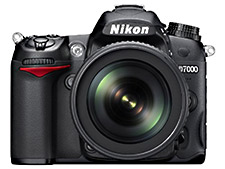
I just received my new Nikon D7000 SLR in the mail today, so I'm working on getting some images and videos together for a full-fledged review.
Handling / Build Quality
The D7000's body, unlike my old D90, has a few parts made of magnesium alloy, rather than the cheap-feeling plastic of cheaper cameras—and you can really tell the difference.
A few buttons on the D7000 feel a bit better than those on the D90, as well:
- The shutter button, which some people call too sensitive, is just right. Sometimes, in tricky lighting, I would have to set my D90 to continuous mode to get a steadier shot, since the button requires some pressure to trigger. The D7000 requires only gentle pressure after the half-trigger (focus/exposure lock).
- The live-view trigger-switch is in a perfect place. I can switch on live view while I pull the camera away from my eye without even looking, then hit record in the same spot. The D90 made this operation a chore.
- The AF-mode selection button on top of the AF/M switch is a lot more intuitive than having three modes on that switch. I always had to look on the side (moving my eye from the viewfinder) to figure out which focus mode I was using. Now, hold down the button and use one of the two command dials to switch between AF-S, AF-C and AF-A, and the autofocus area mode.
I've also purchased the excellent Nikon MB-D11 Battery Grip, and it makes the D7000 feel much more solid, especially when using pro glass like the 70-200 VR lens. Without the battery grip, the D7000 body stays in my hand about the same as the D90 did - my pinkie would like a little bit more area to hold, and it gets it with the battery grip.
High ISO Image Quality
I'm not even going to discuss low-ISO image quality—it's incredible, as is the quality on any other DSLR released in the past two years.
Nikon introduced a few new features which make this camera marginally better than the D90 for high-ISO/low-light photography:
- Increased dynamic range via 14-bit RAW images (the D90 had 12-bit images)
- A new image sensor (a slight improvement over the D90... plus it adds a few million pixels)
- Updated image processing algorithms (Nikon calls it 'EXPEED 2'—I call it a new year, a new software update that improves everything a slight bit...)
For my sample shots, I set up the D90 and the D7000 on a tripod and mounted my 50mm f/1.4 lens and set the cameras into shutter priority mode at f/2.8. Here's the full image, cropped and adjusted for sensor-size differences in the samples below:
Click the image to download the original JPEG (untouched, straight from Aperture)
Here are 100% (adjusted) crops from both cameras - at ISO 1600 and ISO 6400:
| Nikon D90 | Nikon D7000 | |
| ISO 1600 | 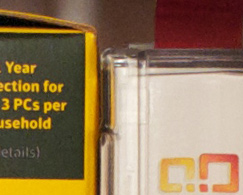
|
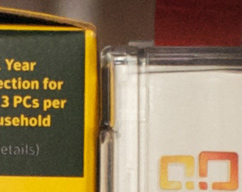
|
| ISO 6400 | 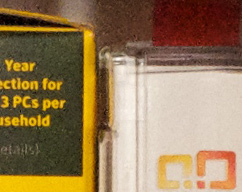 |
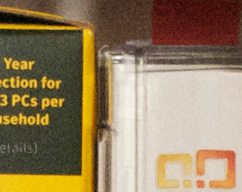 |
As they say... go big or go home. I didn't test ISO 3200, because it just doesn't matter much. Even at ISO 6400, there's not a huge difference in image quality between the D90 and the D7000. The actual sharpness and color rendition is close to a match.
However, you can easily notice that the D7000 holds colors more evenly, and has a bit more pleasant noise pattern (same amount of luminance noise, much less chromatic noise). In this sense, I'd say it's very much like the D700 or D3, and that's a very good thing. However, it's not quite to that level—and I fear no DX-size sensor will ever be able to reach that level, due to the physics.
I'd rate the D7000 as the best DX-format camera for high-ISO shooting, though I haven't used the D300s enough to say that for sure. But it's still at least one step down from the D3/D3s and D700 in high-ISO quality. Good enough for me!
Almost Professional
I have used a camera from every slot in the Nikon lineup over the years, from film to digital—consumer SLRs (like the D40), prosumer SLRs (like the D80 and D90), semi-pro SLRs (like the D200 or D300), and pro SLRs (like the D700, sort-of, or the D3/D3s).
The D7000 defies this simple categorization, as it's definitely beyond the prosumer level, and has a few features that put it in the semi-pro range, but it doesn't quite feel semi-pro...
But that doesn't matter to me—it's awesome to have a camera that's priced more like a prosumer, but carries some of these great features:
- 12-preset lens AF fine tuning (I just profiled all my lenses, and one lens I always thought was soft on my D90 is sharp as a tack on the D7000—because it required a +20 AF fine-tuning adjustment!)
- Dual-SD card slots (usually, I use it for backup - there's always that one shot that gets corrupted, just when you don't want that to happen... or the card that breaks).
- 39 AF focus points, and a great autofocus system. It's far superior to entry-level SLR autofocus systems, especially for tracking moving subjects. A very nice improvement over the D90 as well!
Shutter Modes and Quiet Shutter
One of the most interesting new features of the D7000 I was eager to test is the 'Quiet' shutter mode (which is an additional mode setting to the standard Single, Continuous low, Continuous high, and remote options). Instead of the standard Thwack-Whap sound characteristic of Nikon SLRs, the Q mode swings the shutter a little more gently, for more of a Thwump–flip sound. Hear for yourself:
Video - 1080p/24p, Audio Input, Continuous Focus
After the somewhat disappointing quality of 720p video on my D90, I was preparing myself for disappointment with the D7000. But I was in for a pleasant surprise. Unlike the D90, the video is very sharp, compressed well, and is much easier to start and stop.
The D7000 has a live view trigger on the back, surrounding the record button, making live view + recording oh-so-much easier than on the D90. Critical focus is easier to detect while in Live View mode as well. That, mixed with better/faster focusing while in Live View, plus the ability to focus during a recording, makes the D7000's video quality and sharpness much better than the D90.
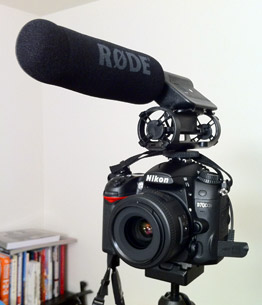
Additionally, there's a 1/8" sound input jack on the side of the D7000 that allows me to adapt practically any sound source for the camera, and it sounds very good. In the video below, I compare a set of external microphone solutions that work great with the D7000 (see below the video for links to the mics I used):
Mics Used in This Video
- Rode VideoMic - 50 from Amazon
- Audio Technica ATR-3350 Lavalier Mic - $20 from Amazon
- Sony WCS999 Wireless Mic - 00 from Amazon
The quality is, in a nutshell, amazing. Check out this other video I recorded using an external lav mic with the D7000 at my home—both these videos were recorded with available light!
For more microphone suggestions, much of the research I've done on external mics (wired and wireless) for the iPhone 4 applies here.
Conclusion
I am quite impressed with this camera, and I feel it will be a worthy upgrade to my D90. To anyone who is happy with the D90, and doesn't need any improvements in high-ISO shooting or video recording, I say stick with the D90. But, if you're like me and you'd like a D3, but can't justify the cost... and love high quality HD video, then the D7000 is a good middle ground.
Buy from Amazon.com:
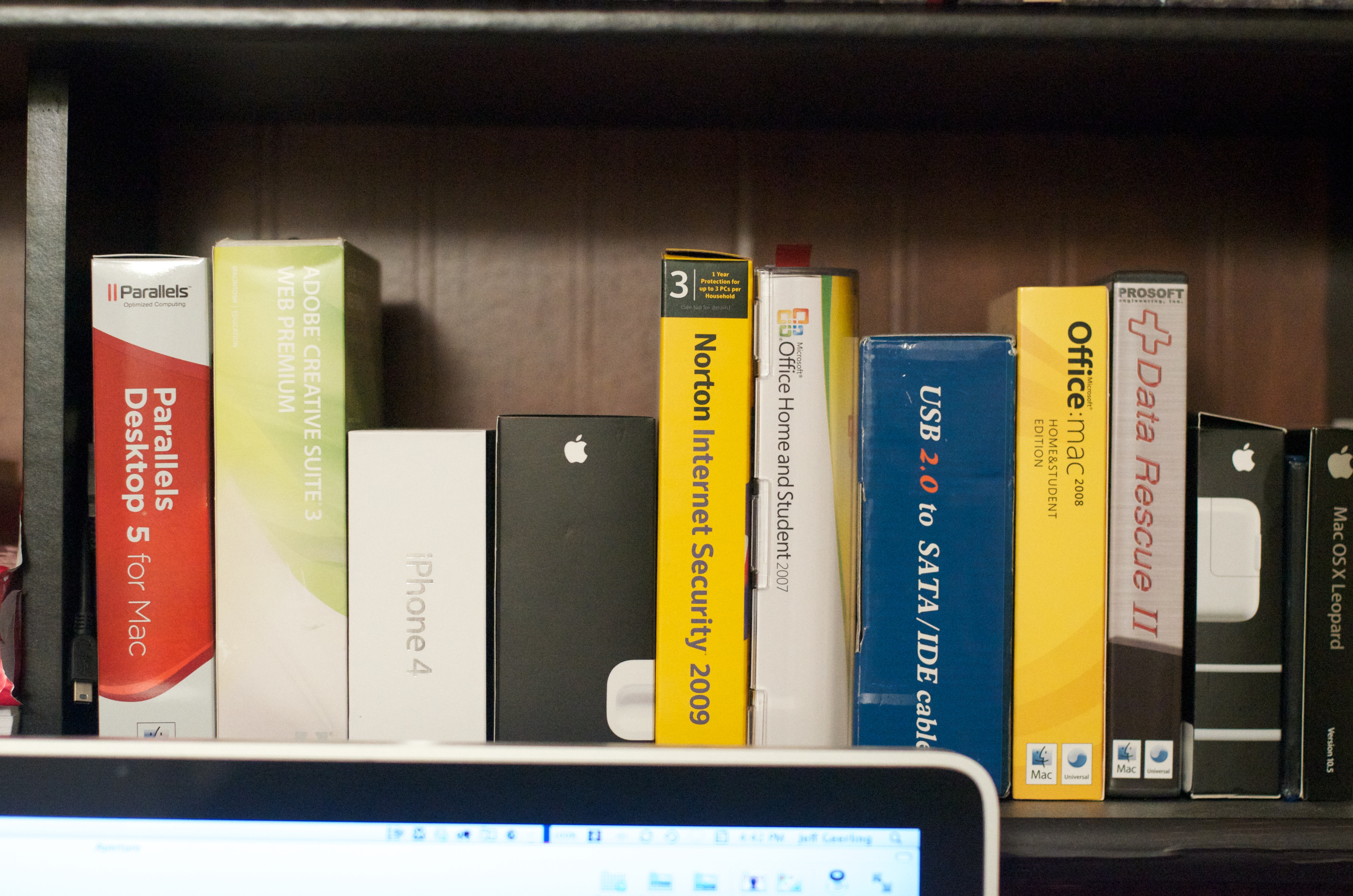
Comments
Hi Jeff.
I love your use of the word "Cludgy"!
I agree the autofocus is certainly not the same as your run of the mill video camera. The focus mechanism is tricky and I'll have to do a lot more shooting with it before I am willing to shoot in any mode besides manual.
Do you notice any issues with the D7000 and its color balance? Auto white balance is just not meeting what I consider to be an acceptable standard. Usually a photographer shooting in RAW can correct subtle white balance in Bridge or Lightroom but even still the quality is not the same as my Nikon D3 image files. I notice the D7000 to have a strange yellow/orange and sometimes greenish hue in flesh areas which is difficult to correct. Does anybody else notice this? It is especially prominent in higher ISO images.
Overall I am happy to have my D7000 because of its ability to shoot video, which is a HUDGE benefit to my work, and I'm happy to have it snugged tightly into my camera bag. I am sure you will enjoy shooting with it and will be happy with your nice big image files to play with!
p.s. I love the quiet mode too! Shooting with a D3 in a church sounds like a bazooka firing so I am very pleased to have that feature on the D7000!
I haven't shot enough in mixed lighting conditions to have a firm grasp on the color balance issues, though I do see a tendency for the D7000 (like my older D90) to slant towards the orange color cast, and it's sometimes difficult to correct it in Aperture.
I'll be watching out for this, most assuredly, as well as the possibility of back focus (which I've heard can happen with this model camera, but is correctable in-camera).
Hi Jeff,
Great review, I enjoyed reading alot, and I found the mic-test part of it especially interesting as well.
You have pretty much convinced me that a D7000 would be the right upgrade choice for me and my old D50.
Did the battery grip arrive yet? Would love an update on how that is working out.
Thanks, Lars
The battery grip has arrived, and it's a great grip for this camera—a little more solid/nice feeling than the D90 battery grip. I will give a more thorough review as soon as I can.
I have the Nikon D7000 and the Rode mic. I like it, but I've tried everything to figure out the autofocus and the audio. No matter what I do, I pick up the noise from the camera with the mic. I thought that one of the benefits of the Rode Mic is that it wouldn't pick up the autofocus noise of the lens. Do you have this issue and any suggestions? I would love to use the autofocus instead of manual for some things, but if I want audio I'm out of luck.
It really depends on the lens itself - if you have an old, huge, AF lens that sounds like a truck while you're focusing, the only way to get that sound out of the video is to have your mic far away (right up by the source).
I mostly use AF-S lenses with near-silent motors in them, and I can't hear the sounds on my camera.
If the lens is relatively quiet, but you hear noise in the mic through the body, you might need to check your mic's shock mount to make sure it's working well, and no cable is transferring the sound through the camera body to the mic.
Great info Jeff, thanks for sharing. I switched to the D7000 a month ago. The video quality is indeed quite stunning, but to really use it for all it has worth we are getting the best results using manual focus. We have this really old Nikon 135mm 2.0 prime lens that is fully manual, and it is just a riot to set the apeture to wide open (2.0) and then drill through the layers of what is in front of you with full control of the focal plane. Here is a 1 minute sample my son Nate did using the Manual movie setting on the D7000: http://www.youtube.com/user/RYMN0CER0US#p/u/3/eeQszz7kSEY
Next project...recording a friend teach on what the Bible has to say on suffering...I need a wireless lav mic and all the info you share on that has been very helpful also. Thanks.
did you have the audio on the camera set to auto or did you use one of the low/medium/high settings?
THanks!
I typically leave it full auto. Simplifies things for me, and if I want to do more advanced level control or other stuff, I'll have a mixer with me, or at least a professional recorder with phantom power, multiple channel level control, etc... Camera body is not a great place for doing professional audio recording ;-)
Thanks for the test shooting. It helped me a lot and i think i'll buy the rode :)
Good choice! Also, if you can use my link to it, I get a small kick-back from Amazon that lets me get more equipment to test for you :)
Dear Jeff
I was wondering what kind of mixer you used in your microphone tryout video?